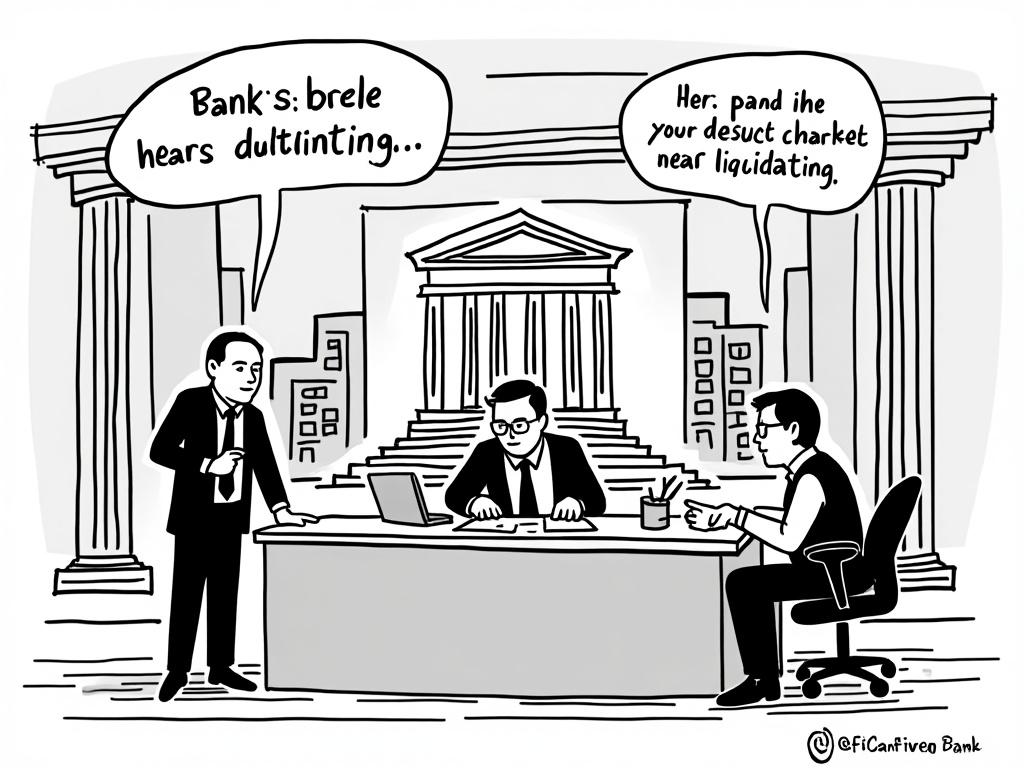
Credit Institutions in Greece: Licensing and Operations Guide
Reading time: 12 minutes
Thinking about establishing a credit institution in Greece? You’re stepping into one of Europe’s most dynamic financial markets—one that’s bounced back stronger after years of economic transformation. Let’s navigate this complex landscape together and turn regulatory requirements into your competitive advantage.
Table of Contents
- Understanding the Greek Credit Institution Landscape
- Licensing Requirements and Procedures
- Operational Framework and Compliance
- Overcoming Common Challenges
- Real-World Success Stories
- Your Strategic Roadmap Forward
- Frequently Asked Questions
Understanding the Greek Credit Institution Landscape
Greece’s banking sector has undergone remarkable transformation since 2010. Today’s regulatory environment, overseen by the Bank of Greece (BoG) and aligned with European Banking Authority (EBA) standards, offers both opportunities and stringent requirements for new entrants.
Market Overview and Opportunities
The Greek credit institution sector currently comprises four major systemic banks controlling approximately 95% of total assets, alongside smaller specialized institutions. This concentration creates unique opportunities for niche players, particularly in areas like fintech integration, SME lending, and properties in peloponnese financing where traditional banks may be less agile.
Key Market Statistics (2024):
- Total banking assets: €285 billion
- Non-performing loans ratio: 7.1% (down from 45% in 2016)
- Credit institution licenses issued annually: 3-5
- Average licensing timeline: 12-18 months
Regulatory Authority Structure
The Bank of Greece serves as your primary regulator, but understanding the multi-layered oversight structure is crucial:
Regulatory Hierarchy Visualization
Licensing Requirements and Procedures
Getting your credit institution license isn’t just about meeting minimum requirements—it’s about demonstrating operational excellence from day one. Here’s your strategic approach:
Capital Requirements: Beyond the Minimums
While the legal minimum is €5 million, successful applicants typically present initial capital of €15-25 million. Why? Because regulators assess your ability to weather economic volatility and fund growth plans.
| Institution Type | Minimum Capital | Recommended Capital | Success Rate |
|---|---|---|---|
| Commercial Bank | €5 million | €25-50 million | 85% |
| Investment Bank | €5 million | €15-30 million | 75% |
| Specialized Lender | €5 million | €10-20 million | 90% |
| Digital Bank | €5 million | €15-25 million | 65% |
Management and Governance Standards
Your management team isn’t just evaluated on paper—they undergo rigorous “fit and proper” assessments. The Bank of Greece examines:
- Professional competence: Minimum 5 years senior financial services experience
- Reputation: Clean regulatory and criminal record across all jurisdictions
- Time commitment: Board members must dedicate sufficient time (typically 25+ days annually)
- Independence: Adequate independent directors for effective oversight
Pro tip: Start building relationships with qualified Greek professionals early. Local market knowledge and regulatory familiarity significantly strengthen applications.
The Application Process: A Strategic Timeline
Successful applicants treat licensing as a strategic project, not just paperwork. Here’s the realistic timeline:
Months 1-3: Preparation Phase
Document preparation, team assembly, preliminary BoG consultations
Months 4-6: Formal Application
Submission of complete application package, initial regulatory review
Months 7-12: Assessment Period
Detailed regulatory examination, management interviews, business plan scrutiny
Months 13-18: Final Authorization
Conditional approval, final compliance verification, license issuance
Operational Framework and Compliance
Once licensed, your real challenge begins: building sustainable operations that satisfy both regulators and customers while generating returns.
Ongoing Capital and Liquidity Requirements
Greek credit institutions must maintain robust capital ratios that often exceed EU minimums:
- Common Equity Tier 1 (CET1): Minimum 4.5%, typically maintained at 12-15%
- Tier 1 Capital: Minimum 6%, typically maintained at 14-17%
- Total Capital: Minimum 8%, typically maintained at 16-19%
- Liquidity Coverage Ratio (LCR): Minimum 100%, best practice above 150%
These aren’t just regulatory boxes to tick—they’re your business resilience indicators. The Greek banking crisis taught regulators and market participants that adequate buffers are essential for navigating economic volatility.
Risk Management Framework
Your risk management isn’t just about compliance—it’s about competitive advantage. Institutions with sophisticated risk frameworks can pursue opportunities that others cannot safely handle.
Essential Risk Management Components:
- Credit risk assessment and monitoring systems
- Market risk measurement and hedging strategies
- Operational risk identification and mitigation
- Liquidity risk management and contingency planning
- Anti-money laundering and sanctions compliance
Overcoming Common Challenges
Let’s address the three biggest hurdles new credit institutions face—and how to overcome them strategically.
Challenge 1: Technology Infrastructure Costs
Modern banking demands sophisticated technology, but building everything in-house is prohibitively expensive for new entrants.
Strategic Solution: Embrace Banking-as-a-Service (BaaS) platforms and cloud-native solutions. Greek regulators increasingly accept cloud deployments, provided they meet data residency and security requirements.
Case Study: Viva Wallet, Greece’s fintech success story, leveraged cloud infrastructure and API-first architecture to achieve pan-European expansion while maintaining regulatory compliance across multiple jurisdictions.
Challenge 2: Customer Acquisition in a Concentrated Market
With four banks dominating retail banking, customer acquisition requires differentiation beyond traditional product features.
Strategic Solution: Focus on underserved niches where incumbents are less competitive. This could include specialized lending (e.g., renewable energy projects), digital-first customer experiences, or serving specific demographic segments.
Challenge 3: Regulatory Reporting Complexity
Greek credit institutions must satisfy multiple reporting requirements: domestic supervisory reporting, ECB requirements, and various statistical submissions.
Strategic Solution: Invest in integrated regulatory reporting platforms early. The cost savings and risk reduction compared to manual processes justify the initial investment within 12-18 months.
Real-World Success Stories
Digital Transformation Success: Optima Bank
Optima Bank, licensed in 2019, exemplifies successful market entry through digital differentiation. By focusing on digital-first customer experience and SME lending automation, they achieved €500 million in assets within three years.
Key Success Factors:
- Clear digital strategy from launch
- Focused target market (SMEs and affluent individuals)
- Strong technology partnerships
- Experienced management team with local market knowledge
Niche Market Focus: Pancreta Bank
Pancreta Bank succeeded by focusing on Crete’s regional market, understanding local business needs, and building strong community relationships. Their regional focus allowed them to compete effectively against larger institutions.
Lessons Learned:
- Geographic specialization can overcome scale disadvantages
- Local relationship banking remains valuable
- Understanding regional economic dynamics drives success
Your Strategic Roadmap Forward
Ready to transform your Greek credit institution vision into reality? Here’s your actionable roadmap:
Phase 1: Foundation Building (Months 1-6)
- Engage experienced local legal and regulatory advisors
- Assemble your management team and board of directors
- Develop detailed business plan with realistic financial projections
- Begin preliminary discussions with Bank of Greece
Phase 2: Application Preparation (Months 7-12)
- Complete formal license application documentation
- Establish technology infrastructure partnerships
- Secure initial capital commitments
- Develop comprehensive risk management frameworks
Phase 3: Launch Preparation (Months 13-18)
- Complete regulatory approval process
- Finalize operational procedures and controls
- Execute customer acquisition strategy
- Establish ongoing compliance monitoring systems
Phase 4: Market Entry and Growth (Months 19+)
- Launch operations with focused market strategy
- Monitor performance against business plan metrics
- Adapt strategy based on market feedback and regulatory guidance
- Plan for sustainable growth and potential expansion
Remember: successful credit institution establishment isn’t just about regulatory compliance—it’s about building sustainable competitive advantage in Greece’s evolving financial landscape. The institutions that thrive will be those that combine regulatory excellence with genuine customer value creation.
What unique value proposition will your credit institution bring to the Greek market? The opportunity exists for institutions that can navigate complexity while delivering innovative financial solutions.
Frequently Asked Questions
How long does the credit institution licensing process actually take in Greece?
The typical timeline ranges from 12-18 months from initial application to license issuance. However, well-prepared applications with experienced teams often complete the process closer to 12 months, while those requiring significant documentation revisions or management changes can extend to 24 months. The key is thorough preparation and maintaining open communication with Bank of Greece throughout the process.
Can foreign investors establish credit institutions in Greece?
Yes, foreign investors can establish credit institutions in Greece, subject to reciprocity agreements and regulatory approval. EU investors benefit from passporting rights, while non-EU investors must demonstrate additional regulatory compliance and may face enhanced scrutiny. Many successful foreign entrants partner with local management teams to leverage market knowledge and regulatory relationships.
What are the ongoing operational costs for maintaining a Greek credit institution license?
Beyond initial capital requirements, expect annual operating costs of €2-5 million for a small institution, including regulatory fees (approximately €50,000-200,000 annually), compliance infrastructure, technology systems, and professional services. The actual costs depend heavily on your business model, with digital-first institutions typically achieving lower cost ratios than traditional branch-based operations.

Article reviewed by Oliver Michalaki, Mediterranean Hospitality Investments | Boutique Hotels & Resorts, on June 1, 2025




